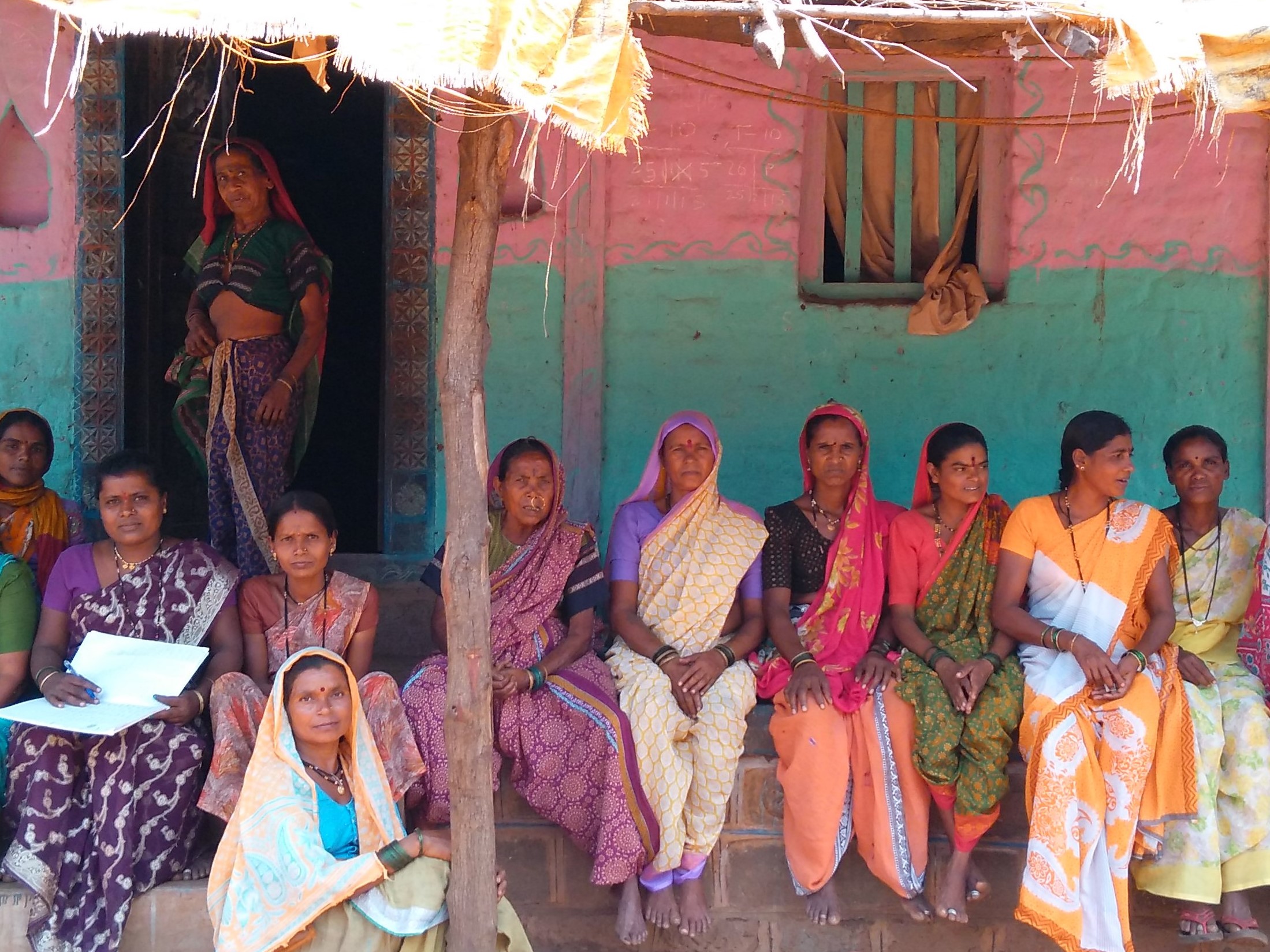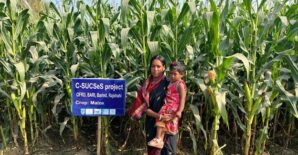
Women Farmers, Palghar, Thane district of Maharashtra, India Source: Md. Tajuddin Khan, IFPRI
Women are major stakeholders in India’s agriculture. In 2011, women constituted nearly half (46.2 percent) of all agricultural laborers and one-third (32.9 percent) of all cultivators in India. Women’s contribution to cultivation of rice—India’s largest crop by area and production--is even higher as they contribute 60-80 percent of the labor required to grow the crop (Ricepedia, 2016). Women may have different preferences from in the families and adoption of new technologies or practices in agriculture may affect them differently. Still, both research and extension in India tend to ignore female farmers in understanding technology adoption and promoting new technologies and practices. In recent years, however, there is a growing emphasis in all development programs, including programs to promote climate-smart agriculture, to actively target female farmers, who are more vulnerable to climate change (Arora-Jonsson, 2011), but are often left out due to existing gender inequalities.
As a part of our research on Gender dimensions on farmers’ preferences for direct-seeded rice with drum seeder in India under the CGIAR Program on Climate Change and Food Security (CCAFS), we carried out a discrete choice experiment to examine the heterogeneity between male and female rice farmers’ preference for direct-seeded rice (DSR) with drum seeders in two predominantly rice growing districts of Maharashtra, India. Both Government of Maharashtra and Government of India have been promoting DSR as a climate smart technology that can reduce the labor required in rice cultivation and offer other benefits, such as yield gain, lower seed requirement, higher profits, more resilience to weather shocks and a reduced carbon footprint.
We enrolled both female farmers in our experiment about 337 women and 329 men farmers took part in our experiments. Of these, 542 men and women were from the same families. Key findings from the study emerges are :-
- Both female and male farmers prefer cheaper drum-seeders and would buy it only if it is subsidized significantly from its current market price;
- Both groups have positive willingness to pay for increased yield, reduced seed rate and reduction in labor use, but;
- They have different relative valuations of different attributes of the drum seeder: women value labor saving more than men while men value reduction in seed-rate and increase in yield more than women.
- The overall willingness to pay (WTP) for drum-seeder is higher for women than the men. Further, women in our experiment are significantly more interested in switching from transplanted to direct-seeded rice. Each choice-set in our experiment offered respondents three options, including the status-quo option of continuing with the transplanted rice. Women were 20 percent less likely to choose the status-quo option than the men in their families.
For the study, we used the Women Empowerment in Agriculture Index (WEAI) to collect self-reported data on the role and say of women in agriculture. The respective gender roles in the family and on the farm, seem to explain some of these differences. Men have a greater say over how the family spends the cash. Accordingly, men tend to have a higher willingness to pay for attributes that increase income (increase in yield) or reduce cash costs (reduction in the seed rate). Women contribute a large share of the labor for transplanting rice, much of which is unpaid work on family farms. Women, therefore, seem to value labor saving significantly more than their male counterparts.
The study’s findings of women having higher WTP for a new technology runs somewhat contrary to the existing literature on technology adoption, which shows that women have slower observed rates of adoption of a wide range of technologies than men (Doss and Morris 2000) and lower WTP for new products, such as weather-indexed insurance (Akter et al. 2016), probably due to greater time and resource constraints, lower human capital endowment (education and exposure to the outer world), and poorer access to complementary inputs (Kamwamba-Mtethiwa et al. 2012). In our study, women are far more interested in and are willing to pay more for a new technology that promises to reduce the backbreaking work.
The WEAI data shows that women in rural Maharashtra work harder in rice cultivation, but they have a significantly lower say than the men in household decisions related to farming, such as choice of crops, inputs to buy, and the adoption and purchase of new technologies and equipment. This study also found, however, that although women have less say than the men in their families, they are not completely powerless. In fact, women do have a considerable say in many household decisions. Therefore, existing development programs, including agriculture extension, should not ignore women when promoting new climate-smart technologies, products, or practices, as ignoring women may reinforce the existing gender inequalities. Given women’s interest in new and better technologies, extension for the promotion of DSR drum seeder is likely to be more successful if it also targets female farmers and highlights the attributes of the technology that are of greater interest to them.
Read More:



